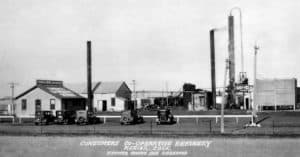Kyle White, one of our in-house policy experts, weighs in on the federal government’s 2018 economic update and what it means for co-ops.
The Canadian federal government’s 2018 economic update contains some good news for co-operatives.
Capital Investment
The biggest impact on the co-op sector should come from the $14.4 billion Accelerated Investment Incentive. This massive tax credit scheme allows businesses to write off capital costs quickly. Through this scheme, companies can claim up to 100% of capital depreciation for select assets, such as large equipment, building upgrades and other assets that require large capital investments. The costs of doing business should be reduced by this policy, while also encouraging investment throughout the economy through new purchases.
Maintaining Canada’s competitiveness with the US, which recently reduced corporate tax from 35% to 21%, is the goal.
Trade and Export
To increase Canada’s competitiveness in the global marketplace, especially as an exporter of goods, the feds hope to:
- increase farm exports by $75 billion;
- double agri-food exports to China; and
- increase overseas exports by 50%.
The intended outcome of this policy is to reduce reliance on trade with the United States.
Currently, 76% of all Canadian exports are bound for the US. Emerging trade agreements with the European Union and Pacific Asian countries should diversify Canada’s trade partners and offer producers more alternatives in marketing their products. By allocating $1.1 billion to an Export Diversification Strategy over the next 6 years, the feds hope to further increase these numbers.
From our perspective, Canada’s producer co-operatives — particularly those on the prairies — are well-positioned to benefit from these federal investments in infrastructure and trade relationships. Assuming producers can move their product within Canada, an increase in potential trading partners and access to global markets should increase both volume and potentially prices.
Innovation and Social Finance
Two new funds designed to support innovation across industries were also announced.
The Strategic Innovation Fund supports value-added production, innovative technologies, and trade. $800 million over 5 years is directed at forestry, steel and aluminum industries to help mitigate the pain of US tariffs.
In a move that shifts Canada from laggard to leader in social finance, the Social Finance Fund allocates $755 million over 10 years, and is expected to create up to 100,000 jobs.
Social finance is loans and investment provided by the private sector into social enterprises, some types of co-operatives and other social impact-focused organizations. It’s also a clever way for governments to shift financial risk from taxpayers to investors.
Intended to act as seed funding for regional funds, over time the feds hope these funds will become self-sustaining and perhaps even kick back into the federal coffers eventually. Community Service co-ops should keep their eyes open for opportunities to capitalize on this funding.
Northern Food Security
Increased support for the Nutrition North Program, which subsidizes perishable foods in northern, isolated communities is also receiving increased funding. $62.6 million over 5 years is earmarked to improve access to healthy food for those living in the far north.
Members of many consumer co-operatives in the territories and northern Quebec will benefit from this funding. The goal for many of these co-ops is to decrease food costs, and this funding should help.
Housing
Like other co-ops in the social sector, Canada’s co-operative housing sector could get a boost. The previously announced National Housing Strategy commits $40 billion over 10 years to build over 100,000 new units. Plus, the strategy promises to continue financial support for 400,000 housing units, add 7,000 shelter spaces for survivors of family violence, and reduce chronic homelessness by 50%.
Moreover, the National Housing Co-investment Fund announced in May promises $13.2 billion over 10 years. Included in its outcomes is low cost financing options for new developments (up to 60,000 anticipated) and repairs to existing units (over 240,000 expected to be affected).
If you have questions about how your co-op might benefit from these investments, contact us.

 Written by
Written by 



